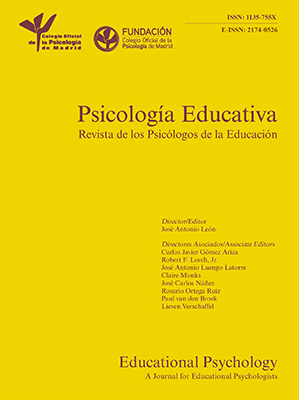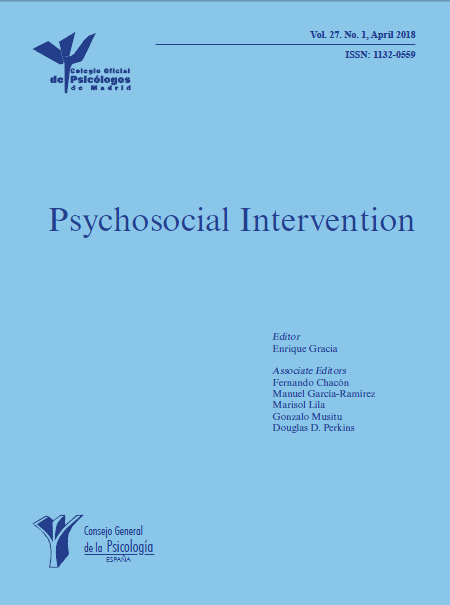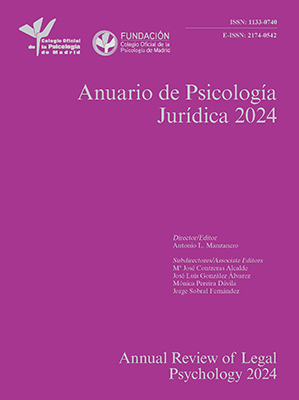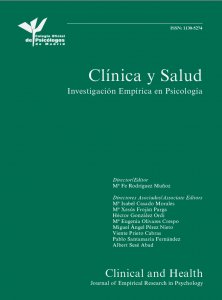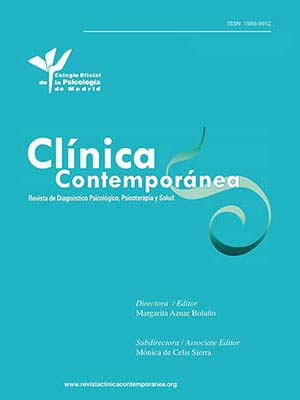
Unpacking insanity defence standards: An experimental study of rationality and control tests in criminal law
[Descifrar los criterios de defensa de la vesania: estudio experimental de las pruebas de racionalidad y control en derecho penal]
Rebecca K. Helm1 , Stephen J. Ceci1 , Kayla A. Burd1
1Cornell Univ., NY, USA
https://doi.org/10.1016/j.ejpal.2016.02.004
Abstract
Este estudio ha investigado la repercusión de los diversos cánones legales en las decisiones simuladas acerca de si un acusado es culpable o no por motivos de vesania. Una muestra de 477 estudiantes universitarios leyeron el resumen de caso relativo a un asesinato, pidiéndoseles luego que determinasen si había enajenación mental. Los casos diferían en cuanto a la condición del acusado (déficit de racionalidad o de control) y el criterio legal proporcionado a los jurados para que tomaran la determinación (Código penal modelo, McNaughten o McNaughten mas una determinación sobre el control). Se investigó el efecto de estas variables en la determinación de vesania. Los jurados rellenaron también cuestionarios que medían actitudes de individualismo y jerarquía y la percepción de los hechos del caso. Los resultados indican que con los criterios de demencia actuales los jurados no distinguen entre acusados con déficit de racionalidad y aquellos con déficit de control, aunque los criterios legales se lo exijan. Incluso los acusados que carecían de control fueron hallados culpables en la misma proporción con un criterio legal que disculpaba el déficit de racionalidad y con otro que excluía los déficit de control y racionalidad. Consiguió mejorarse añadiendo una prueba de control como defensa parcial a determinar tras la decisión sobre la racionalidad. Se comentan las implicaciones para la defensa de la enajenación mental en el sistema de justicia penal.
Resumen
The present study investigated the impact of different legal standards on mock juror decisions concerning whether a defendant was guilty or not guilty by reason of insanity. Undergraduate students (N=477) read a simulated case summary involving a murder case and were asked to make an insanity determination. The cases differed in terms of the condition of the defendant (rationality deficit or control deficit) and the legal standard given to the jurors to make the determination (Model Penal Code, McNaughten or McNaughten plus a separate control determination). The effects of these variables on the insanity determination were investigated. Jurors also completed questionnaires measuring individualism and hierarchy attitudes and perceptions of facts in the case. Results indicate that under current insanity standards jurors do not distinguish between defendants with rationality deficits and defendants with control deficits regardless of whether the legal standard requires them to do so. Even defendants who lacked control were found guilty at equal rates under a legal standard excusing rationality deficits only and a legal standard excluding control and rationality deficits. This was improved by adding a control test as a partial defence, to be determined after a rationality determination. Implications for the insanity defence in the Criminal Justice System are discussed.
In this study we explore an issue that is in the crosshairs of competing legal arguments, namely, we are interested in whether a partial defence based on lack of impulse control would help to fairly punish defendants who lack such control (by not holding them fully responsible) while simultaneously allowing the insanity defence to function as it is meant to, absent extrajudicial attitudes held by jurors. Finding such a standard is important, and can help to inform law, especially in jurisdictions such as Sweden that are considering (re)introducing an insanity defence ( Radovic, Meynen, & Bennet, 2015 ). Despite much debate on control tests in the legal literature, little experimental research has tested the effects of including a control test as a defence in criminal cases.
Current Insanity Standards–Rationality and Control TestsThe current criminal law governing insanity acknowledges that some criminal defendants are not responsible for their actions due to a lack of rationality, meaning the defendant lacks the capacity to appreciate the nature or wrongfulness of their acts. However, a defence excusing a defendant who had a general ability to understand the nature and wrongfulness of their acts but was incapable (or meaningfully incapable) of resisting an impulse to commit the offence (a ‘control test’) is more controversial (see Morse, 2002; Morse, 2009; Penney, 2012; Redding, 2006 ). Different jurisdictions differ in the test that they use to determine whether a defendant is not guilty by reason of insanity (NGRI). In the United Kingdom, insanity is currently decided based on rationality only (The McNaughten Rule), so only defendants with rationality defects are excused and those whose defence rests on lack of control are deemed ineligible for a NGRI verdict. In the United States, 21 states use the McNaughten Rule (based exclusively on the defendant's judged rationality), 16 states and the District of Columbia use the Model Penal Code, a test based on deficits in both rationality and control, 8 states and the federal system follow an adaptation of the Model Penal Code in which the defence is allowed only for cognitive dysfunction when the defendant is unable to understand the criminality of his conduct, and 6 states have abolished any form of the insanity defence ( Robinson, 2014 ). In addition, since 1982, 12 states have adopted the guilty but mentally ill verdict (GBMI). Ideally, if the jury finds the defendant GBMI, he will be evaluated and treated before returning to prison to finish the sentence. In practice, however, these defendants are typically assigned longer sentences and don’t receive any treatment ( Desmond & Lenz, 2010).
Problems with Current Insanity StandardsResearchers and legal scholars have pointed out that rationality tests that do not allow any defence based on lack of control have become outdated given our current understanding of neurological basis and psychological conditions that place one at risk for impulse control deficits ( Penney, 2012; Redding, 2006 ). Neurological evidence now provides insight into compulsion and lack of impulse control and highlights not only the neurological basis of lack of control, but also its neuroanatomical distinctiveness from lack of rationality ( Hyman & Malenka, 2001; Penney, 2012 ). Legal scholars give examples of cases where neurological damage, specifically damage to the frontal lobe (for details on the significance of the frontal lobe, see Barth, 2007 ), has led individuals who are seemingly rational to commit horrific crimes (for example, see Carrido, 2011).
However, others are worried that even given its separate etiology from a rationality deficit, allowing defendants to plea on the basis of a deficit in impulse control will result in too many being characterised as NGRI. A test assessing lack of impulse control could logically lead to a wide array of defences based on ‘caused’ behaviour, as Professor Stephen Morse suggests, the ‘XYY defence’, and the ‘rotten social background defence.’ ( Morse, 1995 ). This is highly important in relation to the complex concept of personal responsibility in the criminal law: the law is based on the fact that although our actions may be caused, we are still personally responsible for them ( Vincent, 2010 ). Control tests are particularly controversial because defendants in these cases are rational agents.
In addition, there are practical problems with current standards. Firstly, research suggests that extra legal attitudes are playing a significant role in juror determinations of insanity. In particular, it has been shown that jurors tend to use their own construct of what insanity is rather than the legal definition ( Finkel & Handel, 1989; Skeem & Golding, 2001 ), and that legal attitudes and biases are resulting in inaccurate categorisations of defendants and a failure to follow judges’ instructions ( Peters & Lecci, 2012).
The idea that juror conceptions of and attitudes towards insanity (rather than legal standards) are determining their verdicts is supported by empirical analysis of real legal cases. In one study, Callaghan and colleagues investigated the frequency and rate of insanity pleas and acquittals in eight states based on data from sample counties ( Callaghan, Steadman, Mcgreevy, & Robbins, 1991 ). Looking at the states using either the Model Penal Code (i.e., states that employ a test for rationality and a separate test for control deficits) or McNaughten (rationality test alone), the highest acquittal rate for not guilty by reason of insanity or NGRI (percentage of NGRI pleas that resulted in acquittal) was in Washington (87.36%), a state that uses the McNaughten test with the burden of proof on the defendant. Both states using the Model Penal Code with the burden of proof on the defendant had lower acquittal rates (New York–43.34% and Wisconsin–28.24%). In addition, the number of defendants who made insanity pleas per 100 felony indictments was not consistently higher in the states using the Model Penal Code. Although the highest rate of pleas was in Wisconsin (1.59 per 100), the second highest rate of pleas was in Ohio, a McNaughten state with the burden of proof on the defendant, and the rate of pleas in New York was only 0.3 per 100 felony indictments. Due to multiple other differences between the states, it is impossible to make firm conclusions from comparisons of the Model Penal Code and McNaughten states here. However, the data do suggest that the standard used may not affect the number of pleas, or the rate of acquittals.
These problems with the current insanity defence standards may be compounded by increasing use of neuroscience in NGRI cases ( Gurley & Marcus, 2008; Schweitzer & Saks, 2011 ). Evidence suggests that jurors find neuroscience-based evidence to be more persuasive than psychological evidence or evidence of family history ( Rendell, Huss, & Jensen, 2010; Schweitzer & Saks, 2011 ). This could mean a defendant's liability could come to be determined by the extent to which an abnormality could be detected in their brain rather than any legal standard.
Addressing the Problems: The McNaughten+ ProposalOne solution to current problems with the insanity defence would be to ask jurors to make a rationality determination and then a separate control determination. This would have the advantage of forcing jurors to think specifically about any abnormalities that a defendant might have and how they should be categorised (giving less manoeuvrability based on extra legal opinions). Psychological theory suggests this would be advantageous as focus on specific rules requiring detailed and conscious processing is associated with “Type 2” thinking, which is predicted to be more accurate and less biased ( Evans & Stanovich, 2013 ). Using this standard would also mean that rationality and control tests could be treated differently while both being acknowledged as at least partial defences. For example, it would be possible to treat the rationality defence as a full defence but the control defence as a partial defence, recognising the rationality of the agent but also the diagnosable control deficit they suffer from.
This idea is explored in this paper, through what we call the “McNaughten+ standard”. Under this standard jurors make two separate determinations–first jurors make a rationality determination using the McNaughten standard. This is the same as the current McNaughten test and defendants who satisfy the test have a complete defence. When making the rationality determination, jurors know they will go on to make a determination regarding control. Defendants who satisfy the test for lack of control are given a partial defence.
Testing the McNaughten+ StandardThe present study used a sample of 477 undergraduate students to investigate how jurors apply insanity standards based on rationality and control, how they interpret rationality and control standards, and how insanity standards can be utilised to aid accurate and unbiased juror decision-making. We also tested the idea of splitting the insanity defence into separate rationality and control tests to see how this affects juror decision-making.
We tested two current legal tests; the Model Penal Code (MPC) test (which includes a rationality prong and a control prong) and the McNaughten test (which includes just a rationality prong) and our own insanity defence proposal, the McNaughten+ standard. Participants read a vignette describing either a defendant with a rationality defect or a control defect to categorise according to the standard they were given.
Using these standards we tested three hypotheses. Firstly, based on previous research we predicted that the specific current legal standard used would not affect jurors’ decisions ( Finkel & Handel, 1989; Peters & Lecci, 2012; Skeem & Golding, 2001 ). Secondly, we predicted that if we included a rationality test and control test separately, defendants would be categorised more accurately according to whether they had a rationality or control deficit. Finally, we predicted that by manipulating the legal test given, we could change the influences and biases that play into juror decision-making. We predicted that simpler and clearer tests would be more likely to produce results less influenced by biases.
Method ParticipantsParticipants included 477 undergraduate students from a large United States university that contains both a public, state university and a private university within a single administrative structure. Students participated in the study for course credit. We examined the demographics of our sample to give an indication of the population that they represent. The sample was 68.8% female with an average age of 19.27 ( SD = 1.17). The majority of our sample was of non-Hispanic White descent (57.7%).
DesignAll participants received the same case summary based on one used by Roberts, Sargent, and Chan (1993) and later used by Skeem and Golding (2001) and Gurley and Marcus (2008) . The case summary describes the murder of a postal official. The defendant was found with the murder weapon, which was linked to him via fingerprint and blood matching. The defendant has been found to have killed the postal official and participants are asked to decide whether he is guilty or not guilty by reason of insanity.
Participants were randomly assigned to one of six conditions resulting from a fully-crossed factorial design involving two variables: mental disorder of the defendant (rationality defect or control defect), and legal test to be applied (Model Penal Code, McNaughten, or McNaughten + ).
The rationality deficit defendant and the control deficit defendant had many of the same symptoms–the defendant was socially isolated, had vague and rambling speech and an MRI scan showed some abnormality which may have been the cause of his abnormalities. However, in addition to these similarities, the defendant with a rationality defect believed that the victim was part of a group of aliens conspiring to take over the world. The defendant with a control defect was stated to have trouble controlling criminal or otherwise anti-social conduct due to feeling compelled to act a certain way despite knowing that he should not.
Participants allocated to the Model Penal Code and McNaughten conditions made one determination–whether the defendant was guilty or not guilty by reason of insanity. Participants allocated to the McNaughten+ condition first made a determination regarding whether the defendant was guilty or not guilty by reason of insanity (a complete defence), and then went on to make a determination as to whether the defendant lacked control (a partial defence).
MeasuresIn addition to a demographic questionnaire, participants completed the Individualism and Hierarchy scales from Kahan and Braman (2008) . The Individualism scale contained 17 items and measured the relative priority that subjects assigned to group and individual interests (e.g., ‘The government should do more to advance society's goals, even if that means limiting the freedom and choices of individuals’) (α = .86). The Hierarchy scale consisted of 13 items assessing subjects’ attitudes toward socially stratified roles (e.g., ‘We have gone too far in pushing equal rights in this country’) (α = .86).
We also measured subjects’ perceptions of various facts by asking them to indicate whether they agreed or disagreed with various propositions concerning facts that a juror would be likely to consider when making the determination of guilty or not guilty by reason of insanity (e.g., it is likely that the defendant would not have killed the victim had it not been for his mental illness; because the defendant suffered from a mental illness he was unable to stop himself from killing the victim).
Results Initial ANOVA47.8% of participants rendered a verdict of not guilty by reason of insanity (NGRI). The other 52.2% rendered a verdict of guilty.
We ran an initial ANOVA with insanity decision (the determination under the model penal code in the first legal test condition and the determination under McNaughten in the second and third legal test conditions) as the dependent measure and legal test and defendant mental state as factors. We ran the ANOVA with and without gender as a factor: the significant effects were the same in both ANOVAs and there was no main effect of gender ( p = .952) or interactions with gender. Results from the ANOVA without gender are reported in Table 1.
Overall Analysis of Variance with Verdict as Dependent Measure.
| df | F | ηp 2 | p | |
|---|---|---|---|---|
| Legal test | 2 | 9.863 | .040 | < .001 |
| Mental state | 1 | 0.759 | .002 | .384 |
| Legal test x mental state | 2 | 1.175 | .005 | .310 |
The results of our initial ANOVA show a significant main effect of legal test F(2, 2.38) = 9.86, p < .001, ηp 2 = .04 (see Figure 1 ). The subjects who were given the McNaughten+ control instructions were roughly 40% more likely to return guilty verdicts using the rationality test, a relatively large effect (difference between MPC and McNaughten+: d = 0.4; difference between McNaughten and McNaughten+: d = 0.45). There was no main effect of mental state and the interaction between legal test and mental state was not significant.
Individual ANOVAs for each Legal TestIn order to further probe decisions under each legal test, we conducted individual ANOVAs for each legal test with verdict as the dependent measure and mental state of the defendant as the independent measure. The results of these ANOVAs are reported in Table 2 . In ANOVAs for the Model Penal Code and the McNaughten test, there was no main effect of mental state, with NGRI rates being similar for defendants who lacked rationality or lacked control ( p = .876 and p = .737 respectively). In the ANOVA for the McNaughten+ test, there was a marginally significant main effect of mental state F(1, 0.75) = 3.36, p = .069, ηp 2 = .02, showing that participants categorised defendants who lacked control guilty more often than defendants who lacked rationality.
Analysis of Variance with Verdict as Dependent Measure Separately for Each Legal Test.
| Legal Test | df | F | ηp 2 | p | |
|---|---|---|---|---|---|
| MPC | Mental state | 1 | 0.024 | .000 | .876 |
| McNaughten | Mental state | 1 | 0.113 | .001 | .737 |
| McNaughten+ | Mental state | 1 | 3.360 | .020 | .069 |
We ran a follow up ANOVA that investigated the number of participants who granted the defendant at least a partial excuse. This includes participants who found the defendant NGRI in all three legal test conditions, and also the participants who found the defendant to have a partial excuse based on lack of control in the third legal test condition. In this ANOVA, granting a complete or partial defence was the dependent measure and the independent measures were legal test and defendant's mental state.
Overall, 64.6% of participants rendered a verdict giving the defendant either a complete or partial defence. The other 35.4% rendered a verdict of guilty, with no defence.
The results of this ANOVA are reported in Table 3 . Again, the results show a significant main effect of legal test F(2, 4.03) = 18.79, p < 0.001, ηp 2 = .074. In this case, subjects in the McNaughten+ condition allowed some kind of defence more often than those in the Model Penal Code or McNaughten conditions. This is illustrated in Figure 2.
Overall Analysis of Variance with Whether at Least a Partial Excuse Was Allowed as Dependent Measure.
| df | F | ηp 2 | p | |
|---|---|---|---|---|
| Legal test | 2 | 18.788 | .074 | < .001 |
| Mental state | 1 | 0.134 | .000 | .715 |
| Legal test x mental state | 2 | 0.110 | .000 | .896 |
In order to probe differences in the decision-making process between the legal tests, we split the data by legal test and ran binary logistic regressions to see what factors significantly predicted final verdict. We put each of our fact perception questions into the regression as well as participants’ individualism and hierarchy scores. The results of each of these regressions are reported in Table 4.
Logistic Regressions for Each Legal Test, Using Fact Perceptions, Hierarchy, and Individualism to Predict Verdict.
| Legal Test | Factor | B | SE | Wald | OR |
|---|---|---|---|---|---|
| MPC | Perception 1 | 1.651 | 0.517 | 10.186 | 5.214 * |
| Perception 2 | 1.576 | 0.476 | 10.958 | 4.834 * | |
| Perception 3 | 0.097 | 0.483 | 0.040 | 1.102 | |
| Perception 4 | 0.885 | 0.455 | 3.780 | 2.424 | |
| Perception 5 | 1.121 | 0.513 | 4.769 | 3.067 * | |
| Perception 6 | -.0333 | 0.470 | 0.501 | 0.717 | |
| Hierarchy | 1.330 | 0.594 | 5.014 | 3.782 * | |
| Individualism | 0.153 | 0.685 | 0.050 | 1.166 | |
| McNaughten | Perception 1 | 1.099 | 0.470 | 5.463 | 3.003 * |
| Perception 2 | 1.132 | 0.477 | 5.635 | 3.103 * | |
| Perception 3 | 0.911 | 0.521 | 3.055 | 2.487 | |
| Perception 4 | 0.980 | 0.498 | 3.867 | 2.664 * | |
| Perception 5 | 0.779 | 0.543 | 2.052 | 2.178 | |
| Perception 6 | 0.155 | 0.510 | 0.092 | 1.168 | |
| Hierarchy | 0.510 | 0.635 | 0.646 | 1.665 | |
| Individualism | 0.352 | 0.700 | 0.253 | 1.422 | |
| McNaughten+ | Perception 1 | 0.124 | 0.446 | 0.078 | 1.132 |
| Perception 2 | 1.001 | 0.422 | 5.628 | 2.722 * | |
| Perception 3 | 1.331 | 0.511 | 6.781 | 3.786 * | |
| Perception 4 | 0.511 | 0.417 | 1.506 | 1.667 | |
| Perception 5 | 1.276 | 0.440 | 8.408 | 3.584 * | |
| Perception 6 | 0.320 | 0.468 | 0.466 | 1.377 | |
| Hierarchy | 0.674 | 0.543 | 1.535 | 1.959 | |
| Individualism | 0.470 | 0.692 | 0.461 | 1.600 |
Note. OR = odds ratio. Perception 1 = it is likely that the defendant would not have killed the victim had it not been for his mental illness. Perception 2 = because the defendant suffered from a mental illness he was unable to stop himself from killing the victim. Perception 3 = the defendants MRI results show that he is mentally disabled. Perception 4 = the defendant was not in control of his actions when he killed the victim. Perception 5 = the defendant did not know what he was doing when he killed the victim. Perception 6 = the MRI results are not conclusive as to whether the defendant is mentally ill.
p < .05.
Model penal code . For the participants who made their decision based on the model penal code, four predictors were significant: Hierarchy Score ( B = 1.330, p = .025) and three fact perceptions: it is likely that the defendant would not have killed the victim had it not been for his mental illness ( B = 1.651, p = .001), because the defendant suffered from a mental illness he was unable to stop himself from killing the victim ( B = 1.576, p = .001), and the defendant did not know what he was doing when he killed the victim ( B = 1.121, p = .029).
McNaughten. For the participants who made their decision based on the McNaughten standard, three fact perceptions were significant: it is likely that the defendant would not have killed the victim had it not been for his mental illness ( B = 1.099, p = .019), because the defendant suffered from a mental illness he was unable to stop himself from killing the victim ( B = 1.132, p = .018), and the defendant was not in control of his actions when he killed the victim ( B = 0.980, p = .049).
McNaughten plus an independent control test. For the participants who made their decision based on the McNaughten standard (but who knew an independent control test would follow), three fact perceptions were significant: because the defendant suffered from a mental illness he was unable to stop himself from killing the victim ( B = 1.001, p = .018), the defendants MRI results show that he is mentally disabled ( B = 1.331, p = .009), and the defendant did not know what he was doing when he killed the victim ( B = 1.276, p = .004).
For all of the legal tests, the same fact perceptions were significant when included with or without the hierarchy and individualism scores.
Discussion Proportion of Guilty Verdicts and Accuracy of CharacterisationThe results of this study support the contention that jurors’ decisions in insanity cases are not affected by whether they are asked to decide based on the Model Penal Code test (with a rationality limb and a control limb) or on the McNaughten test (based entirely on rationality), even when considering a defendant suffering from a clear control disorder. This suggests that jurors are making decisions based on who they think is insane rather than on the specific legal standard they are given and is consistent with existing literature showing that jurors tend to use their own conceptions of insanity rather than legal definitions when making determinations ( Finkel & Handel, 1989; Skeem & Golding, 2001 ).
This study built on the existing literature by introducing a new method that shows promise in reducing bias in this area. Our results show that this indifference to legal instructions changes when rationality and control are included separately (with rationality as a complete defence and subsequently control as a partial defence). Using this latter legal test, a higher proportion of defendants received either a complete or partial defence when using McNaughten+, but not to the extent that all defendants were found not guilty (supporting the idea that it is possible to include a control prong without opening the floodgates to excuse any seemingly “caused” behaviour, as discussed by Morse, 1995 ). In addition, when using the control prong as only a partial defence, significantly fewer defendants were given a complete defence than under the MPC or McNaughten standards.
Whether lack of control should be a complete defence or a partial defence is something to be debated and further investigated, but importantly, this study suggests that including the two separately led to more accurate categorisations of defendants. Under the Model Penal Code (MPC) and the McNaughten standard, defendants with rationality disorders and defendants with control disorders were classified as NGRI at roughly the same rates, which should be the case under the MPC but not under McNaughten. Using the McNaughten+ legal test, more defendants with rationality deficits were classified as having a rationality deficit than defendants with control deficits, showing that the test improved accuracy in categorisation. This is consistent with traditional dual process theory, which suggests that decision-making based on specific rules that require conscious processing is the most accurate (see Evans & Stanovich, 2013 ). Our results provide support for the idea that including a separate control test may increase accuracy in juror decisions and provide an opportunity for the legal system to increase accuracy and adherence to legal standards.
The McNaughten+ standard may appear similar to the current defence of guilty but mentally ill utilised in some U.S. states (for example, Alaska, Arizona, and Georgia) (see Robinson, 2014 ), but focused specifically on lack of impulse control. However, the fact that it recognises control as a partial excuse (partially excusing the action rather than simply acknowledging mental illness) should avoid problems associated with the guilty but mentally ill verdict, where defendants are typically assigned longer sentences and do not receive any treatment ( Desmond & Lenz, 2010).
This suggestion is more similar to the current system in the Netherlands, where there are different grades of insanity representing different levels of severity and impacting the outcome for the defendant (see Radovic et al., 2015 ). Although these grades in the Netherlands are not based on rationality and control, they do show that such a system can be effective and workable. Treating control in this way may provide a compromise in terms of recognising accepted psychological deficiencies but also recognising some personal responsibility of a rational agent.
Relationship with Hierarchy/Individualism and Fact PerceptionsOur results indicate that people's opinions relating to hierarchy and individualism only play a role in the verdict under the Model Penal Code test (where hierarchy plays a role). Under the other two tests, hierarchy and individualism attitudes did not predict when included in a regression with fact perceptions. This suggests that bias and pre-existing attitudes may play more of a role under the Model Penal Code test. This is in accordance with our prediction that extra legal attitudes will play more of a role under the Model Penal Code due to the broader test giving more room for interpretation than with a more specific test based on either a single cognitive consideration or a temporally specified sequence of cognitive followed by control considerations. This is also supported by research showing than even clinicians struggle to agree on who is insane under the Model Penal Code standard, with evaluators reaching agreement in only 55.1% of cases in Hawaii (although it should be noted that clinician agreement has not been tested under the McNaughten test so we cannot directly compare the tests) ( Gowensmith, Murrie, & Boccaccini, 2013 ).
Particularly relevant to the issue of control is that participants’ answer to the question “the defendant was not in control of his actions when he killed the victim” was predictive of verdict in the McNaughten test. This is essentially the jurors’ perception of the defendant's control, which should not be relevant in the McNaughten test. Including a separate control test after the rationality determination, as is accomplished in McNaughten+ test, reduces the influence of this fact perception and it is no longer a significant predictor. This is important, as by creating an independent test for control we can take control out of consideration in the rationality test.
Conclusions: Policy Implications, Limitations, and Future DirectionsThis study confirms existing research suggesting that jurors use their own conceptions of insanity rather than legal standards when making insanity determinations. Our results show that asking jurors to make a control determination separately from a rationality determination can improve the accuracy of juror categorisations (particularly when control is described as a partial defence). Importantly, as well as improving juror categorisations, our McNaughten+ procedure also seemed to minimise the impact of extra legal factors in insanity determinations. This idea of accurately grouping defendants and treating groups that are scientifically alike in a similar way is consistent with recent calls for “scientising” the culpability of criminal defendants ( Slobogin, 2014 ), and can inform new legal standards and procedure in this area.
However, there are limitations to our study, and future directions that should be taken to build on this work. Firstly, the study differed from a realistic mock trial scenario in that our jurors did not deliberate in groups, but made individual determinations. In addition, jurors only saw limited information on a computer rather than having information presented to them in a trial format. Future work should test the same design in a more realistic mock trial scenario. Secondly, our result showing that the McNaughten+ standard improved accuracy in categorisations was only marginally significant and the initial analysis showed no significant interaction between legal test and mental state. Future work should therefore further test this idea to ensure accuracy of the result. Finally, this research should be combined with additional research examining outcomes in real legal cases (controlling for other relevant factors) in order to ensure mock trial results replicate real legal decision making.
Conflict of InterestThe authors of this article declare no conflict of interest.
Copyright © 2024. Colegio Oficial de la Psicología de Madrid









 CrossRef
CrossRef
